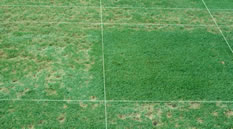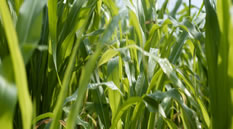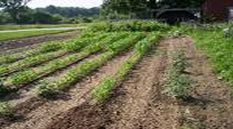In the past decade urea has surpassed and nearly replaced ammonium nitrate as a fertilizer. This has brought about new questions on urea and its use. Urea, a white crystalline solid containing 46% nitrogen, is widely used in the agricultural industry as an animal feed additive and fertilizer Here we discuss it only as a nitrogen fertilizer.
Physical Forms of Urea
 Commercially, fertilizer urea can be purchased as prills or as a granulated material. In the past, it was usually produced by dropping liquid urea from a “prilling tower” while drying the product. The prills formed a smaller and softer substance than other materials commonly used in fertilizer blends. Today, though, considerable urea is manufactured as granules. Granules are larger, harder, and more resistant to moisture. As a result, granulated urea has become a more suitable material for fertilizer blends.
Commercially, fertilizer urea can be purchased as prills or as a granulated material. In the past, it was usually produced by dropping liquid urea from a “prilling tower” while drying the product. The prills formed a smaller and softer substance than other materials commonly used in fertilizer blends. Today, though, considerable urea is manufactured as granules. Granules are larger, harder, and more resistant to moisture. As a result, granulated urea has become a more suitable material for fertilizer blends.
Incorporate Urea for Best Use
Nitrogen from urea can be lost to the atmosphere if fertilizer urea remains on the soil surface for extended periods of time during warm weather. The key to the most efficient use of urea is to incorporate it into the soil during a tillage operation. It may also be blended into the soil with irrigation water. A rainfall of as little as 0.25 inches is sufficient to blend urea into the soil to a depth at which ammonia losses will not occur.
Urea Losses to the Air
 Urea breakdown begins as soon as it is applied to the soil. If the soil is totally dry, no reaction happens. But with the enzyme urease, plus any small amount of soil moisture, urea normally hydrolizes and converts to ammonium and carbon dioxide. This can occur in 2 to 4 days and happens quicker on high pH soils. Unless it rains, urea must be incorporated during this time to avoid ammonia loss. Losses might be quite low in the spring if the soil temperature is cold.
Urea breakdown begins as soon as it is applied to the soil. If the soil is totally dry, no reaction happens. But with the enzyme urease, plus any small amount of soil moisture, urea normally hydrolizes and converts to ammonium and carbon dioxide. This can occur in 2 to 4 days and happens quicker on high pH soils. Unless it rains, urea must be incorporated during this time to avoid ammonia loss. Losses might be quite low in the spring if the soil temperature is cold.
The problem is the NH3, because it′s a gas, but if incorporated the NH3, acts the same as incorporated anhydrous ammonia. Also, half of 28% liquid N is urea and the same thing happens with this half as with regular urea.
Blending Urea with Other Fertilizers
 Urea and fertilizers containing urea can be blended quite readily with monoammonium phosphate (11-52-0) or diammonium phosphate (18-46-0).Urea should not be blended with superphosphates unless applied shortly after mixing. Urea will react with superphosphates, releasing water molecules and resulting in a damp material which is difficult to store and apply.
Urea and fertilizers containing urea can be blended quite readily with monoammonium phosphate (11-52-0) or diammonium phosphate (18-46-0).Urea should not be blended with superphosphates unless applied shortly after mixing. Urea will react with superphosphates, releasing water molecules and resulting in a damp material which is difficult to store and apply.
Application of Urea to Growing Crops
Urea can be applied to sod crops, winter wheat. or other small grains. This application, however, should be made during cool seasons. During warm periods (60 degrees F or above), urea in contact with vegetative material will tend to give off ammonia.
